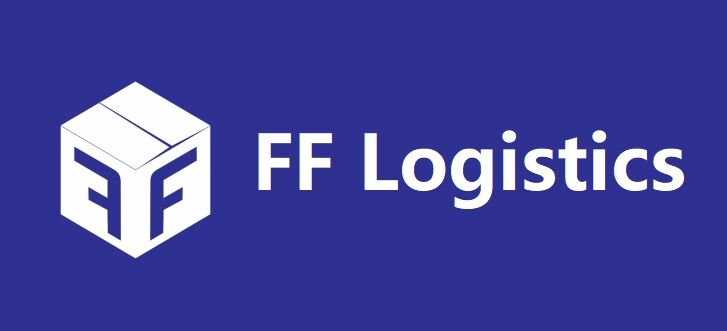A gestão da sua própria loja de comércio eletrónico independente dá-lhe o controlo da sua marca e das relações com os clientes. Com o aumento das compras online, destacar-se é mais importante do que nunca. O sucesso depende de dominar estratégias que o ajudem a se adaptar, crescer e prosperar num mercado competitivo.
Selecção de produtos e cadeia de abastecimento
Escolhendo produtos rentáveis
Escolher os produtos certos pode fazer ou quebrar sua loja de comércio eletrônico independente. Precisamos nos concentrar em coisas que resolvam problemas ou satisfaçam necessidades específicas. Comece por pesquisar tendências. Ferramentas como o Google Trends ou plataformas de mídia social podem ajudá-lo a identificar o que está quente. Não se esqueça de verificar os seus concorrentes. O que é que eles estão a vender? Como podes oferecer algo melhor ou diferente?
Construção de relações com fornecedores
Relações fortes com fornecedores são a espinha dorsal da sua loja. Fornecedores confiáveis garantem que você sempre tenha estoque quando os clientes precisarem dele. Comece por encontrar fornecedores que se alinhem com os seus valores e padrões de qualidade. Plataformas como o Alibaba ou a Faire podem ligar-nos a parceiros de confiança.
Materiais promocionais de alta qualidade
Fotografia de produto
Uma boa fotografia de produto pode fazer a sua loja se destacar. Os clientes não podem tocar ou experimentar os seus produtos, por isso as suas fotos têm de ser convincentes. Use imagens de alta resolução que mostrem todos os detalhes. A luz natural faz maravilhas, mas uma simples caixa de luz também pode ajudar. Não dê apenas um tiro. Capture o seu produto de vários ângulos. Mostre-o em uso, se possível.
Escrever descrições
As descrições dos produtos devem fazer mais do que listar características. Eles precisam de contar uma história. Que problema resolve o seu produto? Como é que melhorará a vida dos seus clientes? Use linguagem simples e seja breve. Os pontos-chave funcionam bem para destacar detalhes importantes.
Pense Sobre o seu público. Se você está vendendo para entusiastas de tecnologia, inclua especificações. Se o público valoriza a estética, concentre-se no design e no estilo. Evite frases genéricas como "alta qualidade". Seja específico e faça suas descrições envolventes.
Marketing de vídeo
Os vídeos são uma forma poderosa de mostrar os seus produtos. Uma breve demonstração ou tutorial pode ajudar os clientes a entender como usar o seu produto. Você também pode criar vídeos de desbloqueio ou depoimentos de clientes. Estes acrescentam autenticidade e construem confiança.
Mantenha seus vídeos curtos e diretos. Plataformas como o Instagram e o TikTok são perfeitas para vídeos rápidos e envolventes. Não precisas de equipamento sofisticado. Um smartphone e uma boa ideia são suficientes para começar. O marketing de vídeo pode diferenciar a sua loja de comércio eletrônico independente da concorrência.
Plano de promoção global
Publicidade nas redes sociais
As plataformas de mídia social são minas de ouro para promover sua loja. Pode chegar ao seu público onde eles já passam o seu tempo. Comece por escolher plataformas que se alinhem com os seus produtos. Por exemplo, o Instagram funciona bem para produtos visuais, enquanto o LinkedIn se adapta a itens B2B.
Crie anúncios que chamem a atenção. Use imagens atraentes e textos curtos e rápidos. Não se esqueça de incluir um claro apelo à ação (CTA). Algo como "Comprar agora" ou "Aprender mais" funciona muito bem. Plataformas como o Facebook Ads Manager permitem-lhe segmentar demografias específicas, para que possa concentrar-se nas pessoas mais propensas a comprar.
Marketing por e-mail
O email marketing é uma das formas mais rentáveis de impulsionar as vendas. Construa uma lista de e-mails oferecendo algo valioso, como um desconto ou um guia gratuito. Uma vez que tiver assinantes, envie-lhes atualizações regulares.
Os teus emails devem parecer pessoais. Use o nome deles e recomende produtos com base nas compras anteriores. Mantenha as suas linhas de assunto curtas e intrigantes para aumentar as taxas de abertura. Por exemplo, O seu próximo produto favorito está à espera!
Colaborações de Influenciadores
Colaborar com influenciadores pode aumentar a visibilidade da sua marca. Encontre influenciadores que se alinhem com o seu nicho. Um influenciador de fitness, por exemplo, é perfeito se você vender equipamento de treino.
Põe-me uma proposta clara. Ofereçam produtos grátis ou uma comissão por cada venda que geram. Os micro-influenciadores (com seguidores menores, mas leais) geralmente proporcionam melhor engajamento do que grandes nomes.
Construir e gerir uma equipa
Contratar Papéis-chave
Dirigir uma loja de comércio eletrónico independente significa que não pode fazer tudo sozinho. É necessário contratar pessoas que possam ajudar o seu negócio a crescer. Começa por identificar os papéis-chave que precisas. Por exemplo, um cliente Serviço o representante pode tratar de perguntas, enquanto o especialista em marketing pode concentrar-se em promoções.
Ao contratar, procure candidatos que se alinhem com os valores da sua marca. As habilidades são importantes, mas a atitude e a adequação cultural são igualmente importantes. Use plataformas como o LinkedIn ou o Indeed para encontrar talentos. Não apresse o processo. Tire tempo para entrevistar e avaliar os candidatos completamente.
Formação e retenção
Uma vez que tenha contratado as pessoas certas, invista na sua formação. A integração clara ajuda os novos empregados a compreenderem as suas funções e as suas expectativas. Crie guias passo a passo ou tutoriais em vídeo para facilitar o processo.
A retenção é tão importante como a contratação. Funcionários felizes ficam mais tempo e têm melhor desempenho. Ofereça-lhes feedback regular e reconheça as suas realizações. Também podem oferecer oportunidades de crescimento, como cursos de desenvolvimento de competências. Uma equipa motivada vai ajudar a sua loja a prosperar.
Dirigindo-se ao público certo
Pesquisa de Mercado
Não se pode vender a todos, por isso é fundamental encontrar o público certo. Comece por pesquisar seu mercado. Olhe para as tendências da sua indústria. O que está a crescer? O que está a desaparecer? Ferramentas como o Google Trends ou o Statista podem ajudar-nos a identificar padrões.
Clientes
Depois de ter feito a sua pesquisa, crie personalidades de clientes. Estes são perfis detalhados dos seus compradores ideais. Pense na idade, na localização, no rendimento e nos interesses deles. São pais? Estudantes? Profissionais? Vai mais fundo. Que problemas enfrentam? Como é que o vosso produto pode resolvê-los? Por exemplo, se você vende garrafas de água ecológicas, sua personalidade pode se preocupar com sustentabilidade e economia de dinheiro.
Análises para segmentação
Os dados são o teu melhor amigo quando se trata de apontar alvos. Use ferramentas de análise para rastrear quem visita seu site. Plataformas como o Google Analytics ou as ferramentas incorporadas do Shopify mostram de onde vem o tráfego e o que as pessoas fazem no seu site.
Preste atenção aos dados demográficos, como idade e localização. Olhem para o comportamento também. Que páginas visitam? Em que produtos clicam? Use estes dados para refinar a sua estratégia.
Melhorar a experiência do utilizador
Design de site
O seu site é a cara da sua loja. Um design limpo e profissional cria confiança e mantém os visitantes envolvidos. Começa com um layout simples. Certifique-se de que a navegação é fácil de usar. Os visitantes devem encontrar o que precisam em apenas alguns cliques. Use fontes claras e imagens de alta qualidade para que seu site pareça polido.
Não te esqueças da marca. O seu logotipo, as suas cores e o seu tom devem corresponder à personalidade da sua loja. Uma marca consistente torna a sua loja memorável.
A resposta móvel
A maioria dos compradores pesquisa no telemóvel. Se o seu site não funcionar bem no telemóvel, perderá vendas. Um design adaptável a dispositivos móveis adapta-se a qualquer tamanho de tela. Isso garante que o seu site se mostre ótimo em smartphones e tablets.
Concentre-se na velocidade. Os utilizadores móveis esperam páginas de carregamento rápido. Comprime imagens e use ferramentas como o Google PageSpeed Insights para otimizar o desempenho. Teste o seu site em diferentes dispositivos. Certifique-se de que os botões são fáceis de tocar e o texto é legível sem zoom.
Processo de pagamento
Um processo de pagamento suave pode aumentar as vendas. Mantém-no simples. Peça apenas as informações necessárias. Formulários longos podem afastar os clientes. Ofereça várias opções de pagamento, como cartões de crédito, PayPal ou carteiras digitais.
Adicione uma barra de progresso para mostrar quão perto os clientes estão de concluir sua compra. Isso mantém-nos motivados. Não se esqueça de incluir uma opção de check-out para convidados. Nem todo mundo quer criar uma conta. Um checkout sem problemas torna mais provável que os clientes voltem.
Dirigir com sucesso uma loja de comércio eletrônico independente em 2025 significa dominar seis áreas-chave: seleção de produtos, materiais promocionais, marketing, gerenciamento de equipe, segmentação de público e experiência do usuário. Continuem a melhorar e a adaptarem-se para ficarem à frente. Comece pequeno, aplique estas estratégias e veja sua loja crescer. O sucesso está a poucos passos de ti!



